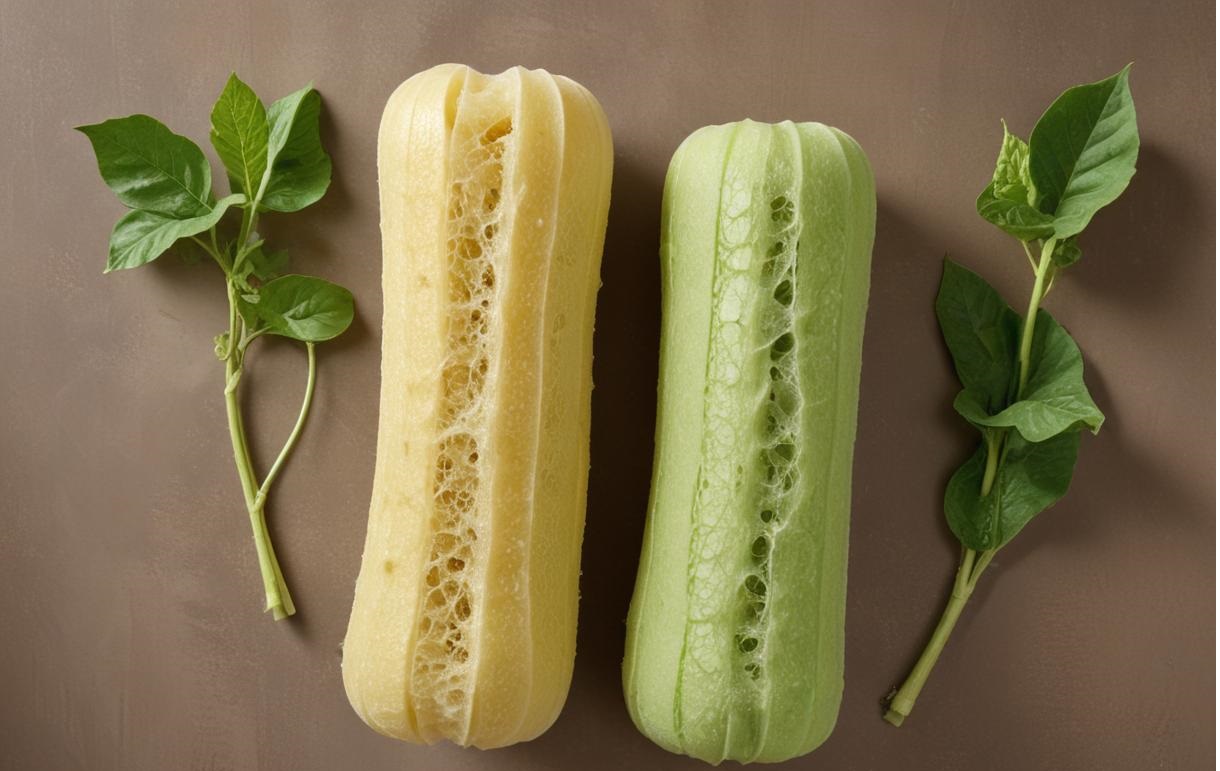Health
What You Need To Know About Loofa

Loofahs, also spelled “luffa,” are natural sponges derived from the fibrous interior of the luffa plant, a member of the cucumber family. They have been used for centuries across various cultures for purposes ranging from personal hygiene to household cleaning. In this article, we’ll explore the history, benefits, uses, and care tips for loofahs, providing you with a comprehensive understanding of this versatile natural product.
The Origins and History of Loofahs
The loofah plant can be grown from seeds; its scientific names are Luffa aegyptiaca or Luffa cylindrica and it is thought to have originated in Asia and Africa, with cultivation beginning perhaps in India. According to early history, the plant arrived in North America more than 9,000 BC, and it is considered to be one of the first domesticated in the New World.
Loofahs were used in ancient Egypt mainly used for scrubbing the body to wash the skin and increase blood circulation. Over time, their use has scaled up to other cultures and places across the world. In the Second World War, h ihrem festen und porösem Aufbau wurden die faserigen Skelette aus reifen Lufa-Schalen alsFilter in Dieselmotoren und Dampfmaschinen eingesetzt.
Benefits of Using Loofahs
Loofahs offer several advantages, particularly in skin care:
Exfoliation: Loofah natural fibers are specialized with the dead skin elimination process leaving the skin well polished and glowing.
Improved Circulation: This usage can increase blood circulation within the body and that leads to healthier skin.
Eco-Friendly: Loofah is natural, unlike synthetic sponges, which are made from nylon and, therefore,(loofah) does not contribute to the accumulation of plastic materials.
Versatility: Other than that, loofahs are used for general cleaning chores, for example washing utensils like spoons or even cleaning stuff like board surfaces.
How to Use a Loofah
Incorporating a loofah into your daily routine is straightforward:
Preparation: The Loofah should be soaked in water before washing; this softens the fiber of loofah.
Application: Dip the loofah into water, and then lather with a little soap or body wash.
Exfoliation: Massage your skin by making circular movements while washing, and pay a little extra attention to the regions that tend to be dry or scaly.
Rinsing: To clean your skin gently after exfoliation wash it with the use of water to wash away the remaining soap and dead skin.
Loofah Care: It is very important to wash the loofah each time you use it to clean yourself very carefully to make sure that it’s clean, then, what you have to do is to make sure you drain all the water and then hang it to dry. It is hygienically safe to warm wash it but should be rinsed in boiling water every now and then to minimize bacterial formation.
Cultivating and Harvesting Loofahs
Loofahs are propagated through vine and, therefore, need a warm environment during their growth, perhaps a period of 150 to 200 days of the growth season. This plant prefers well-drained soil and should be trained, for instance, to a trellis so that the fruits can develop correctly. When the fruits have ripened and dried on the plant, they can be picked and sloughed off the outer shell, exposing the tough, fleshy core.
Caring for Your Loofah
To ensure the longevity and hygiene of your loofah:
Cleaning: When using it, make sure that you wash out the soap and dirt that might be on the loofah before using it for the next time.
Drying: Remove as much of the water as you can, and then put the fabric and bus tops in a place where air can circulate to dry the cloths until they are completely dry to avoid mold and bacteria formation.
Sanitizing: However, bacteria often fester on the loofah, and thus, it is advisable to soak the loofah in hot water for a few minutes, not less than once a week.
Replacement: Your loofah must be changed once every one to three months or if it develops a moldy, smelly, or bland coloration.
Potential Risks and Precautions When Using Loofahs
Traditional sponges are used to scrub the skin, but despite that, they create lather, and they can retain water and possible bacteria because of their rude surface structure. Reduce risks by not scrubbing too often, using it only once or twice a week, and making certain that all soap is washed out and the ears are dried completely after use. Daily wash the loofah with soap and water, and once a week, soak it in vinegar or diluted bleach to minimize microbes.
Alternatives to Loofahs
For those concerned about hygiene, several alternatives to loofahs are available:
Silicone Scrubbers: These are less prone to bacterial growth and easier to clean.
Washcloths: Made of cotton, they are gentle on the skin and can be washed regularly.
Exfoliating Gloves: Provide control over pressure and are machine washable.
Dermatologists often recommend these options over traditional loofahs to maintain skin health.
Environmental Impact of Loofahs
It is important that the environmental impact of these loofahs be treated as not only irrelevant but also that it doesn’t and cannot have any bearing on its use as an item for human utilization in an attempt to provide a positive spin to the argument that a reusing a sponge is okay since it can be used to make a new soap facility.
That is why loofahs that are natural are biodegradable, and they can be disposed of after using the same way that you dispose of biodegradable material, such as a compost bin. Whenever you use a natural loofah, you are combating the use of plastics in your daily lives hence practicing responsible tourism.
The Bottom Line
Loofahs are an all natural, environmentally friendly way to gently scrub and wash the skin. If taken care of, they can be a bonus to one’s care regimen apart from providing an advantage in matters concerning skin and body care, household chores, and even environmental conservation.

-

 Life Style10 months ago
Life Style10 months agoWho is Amra Nor Jenkins? The Untold Story About Jeezy’s Daughter
-

 Celebrity6 months ago
Celebrity6 months agoThe Private World of Marina Pearl LeBlanc, Matt LeBlanc’s Only Child
-

 Entertainment10 months ago
Entertainment10 months agoWhat is Shoujo Ramune? The Comprehensive Guide
-

 Celebrity11 months ago
Celebrity11 months agoThe Untold Truth of William Mapel: A Deep Dive into His Personal Life
-

 News11 months ago
News11 months agoRanch World Ads Review: Everything You Need to Know
-

 Celebrity11 months ago
Celebrity11 months agoThe Untold Story of Denika Kisty: Her Family, Net Worth, and More
-

 Celebrity11 months ago
Celebrity11 months agoWho Is Stephanie Sarkisian? All You Need To Know AboutSteve Sarkisian’s Ex-Wife
-

 Life Style10 months ago
Life Style10 months agoJill Wagner Accident: Life and Health After Accident











